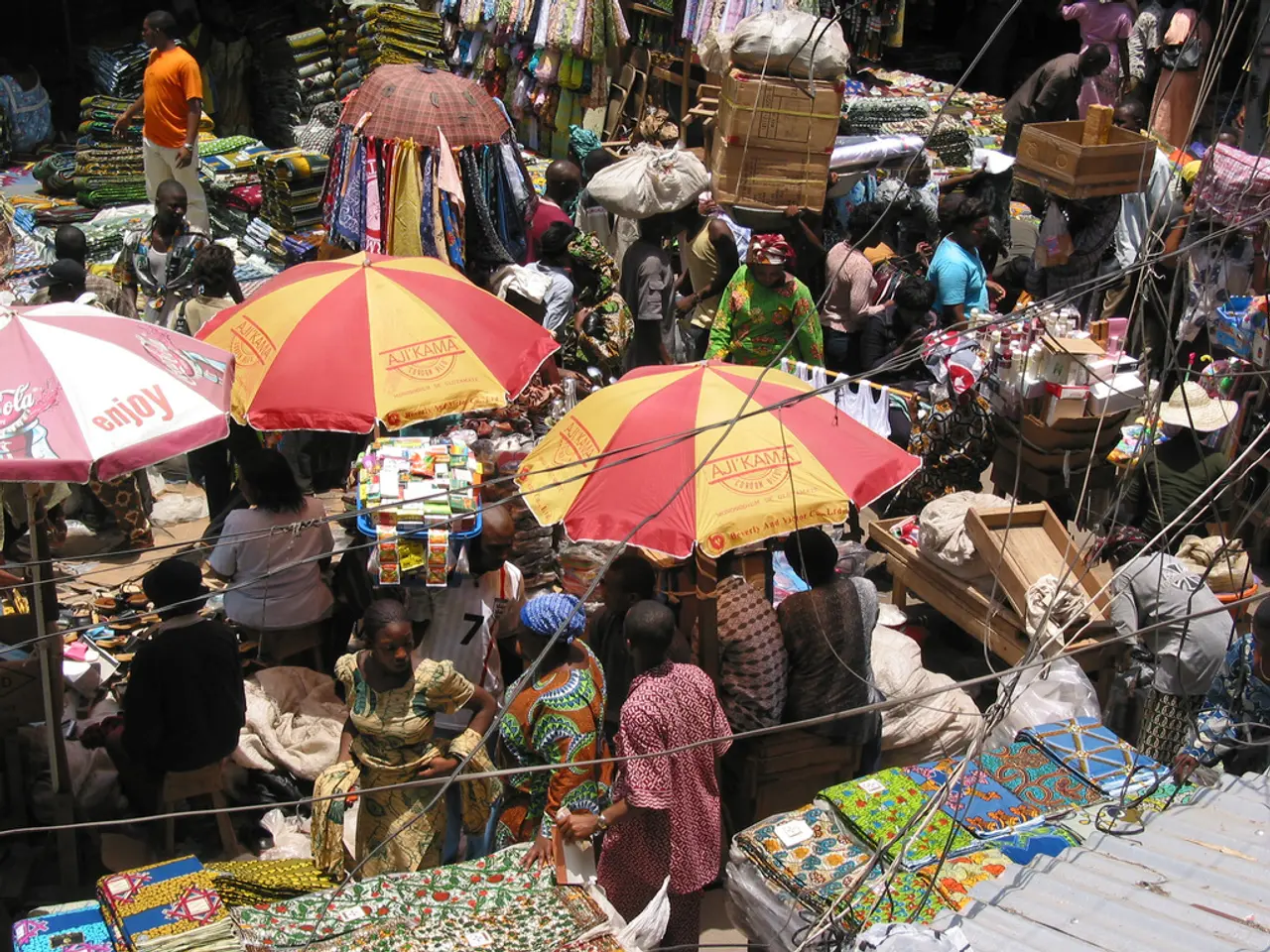Is it possible for Malaysia's artificial intelligence data centers to shift towards eco-friendly operations?
In the heart of Southeast Asia, Malaysia is rapidly emerging as a hub for data centers, with the industry poised to significantly increase energy consumption and carbon emissions.
High energy demands are a key concern, as hyperscale AI data centers consume between 20-100 megawatts (MW) each - enough power to run a small city. This energy is not only used for computation but also for extensive cooling, which itself uses substantial electricity and water resources.
The majority of Malaysia's electricity comes from fossil fuels, with 81% of it being coal-fired in 2024. Plans to expand gas-fired power capacity by 50% to meet data center demand exacerbate this issue, conflicting with international climate goals to limit warming to 1.5°C.
Water consumption for cooling is another challenge, with a 100 MW data center using approximately 1.1 million gallons daily - equivalent to the water needs of a city of 10,000 people. This poses sustainability challenges, especially under increasing water scarcity.
Internal efficiency measures like Power Usage Effectiveness (PUE) do not account for the environmental impact of the grid's energy mix or overall consumption, potentially underestimating the full carbon footprint.
Efforts to mitigate these impacts include encouraging the adoption of renewable power sources, recycled water usage, and advanced cooling technologies such as district cooling systems. However, the current reliance on fossil fuels remains a significant barrier to reducing the environmental footprint of Malaysia’s growing data center industry.
Johor, Malaysia's manufacturing hub, is becoming a hotspot for data center parks due to its cheap electricity, labor, and ample land. Yet, concerns have been raised about whether Malaysia's ongoing expansion into data centers will sufficiently address the environmental and social impacts of energy and water consumption at the local and national level.
The US has announced that Malaysia will face 25% tariffs from August, though talks over a trade deal are ongoing between the two nations. Meanwhile, Malaysia has launched its Corporate Renewable Energy Supply Scheme (Cress) to help businesses procure renewable energy directly from independent power producers. However, added fees have slowed the uptake of the scheme, making it more expensive for businesses to transition to renewable energy.
Shabrina Nadhila, Southeast Asia energy analyst at Ember, warns that the rise of energy-hungry server farms risks increasing emissions and "locking in fossil-fuel infrastructure that may become stranded." Establishing a clear sustainability framework from the outset is critical, as retrofitting becomes much harder once data centers are operational.
In contrast to Malaysia, Singapore imposed a moratorium on new data centers from 2019 to 2022. However, Malaysia is not likely to slow down its expansion into data centers. Ember projects that data center electricity demand will surge from 9 terawatt-hours (TWh) in 2024 to 68 TWh by 2030.
The data center boom can support the country's renewable-energy system, according to Malaysia's environment minister Nik Nazmi Nik Ahmad. Yet, the question remains: can Malaysia balance its ambitions for a thriving data center industry with the need for a sustainable and environmentally friendly future?
[1] Nadhila, S. (2023). Southeast Asia's data center boom: Energy, water, and environmental challenges. ISEAS-Yusof Ishak Institute. [2] Loo, S. (2023). Malaysia's data center expansion: A double-edged sword for the environment. ISEAS-Yusof Ishak Institute. [3] Ember (2023). Data centers in Southeast Asia: Energy, water, and environmental implications. Ember. [4] Malaysia's Ministry of Energy and Natural Resources (2023). Malaysia's Corporate Renewable Energy Supply Scheme (Cress). Government of Malaysia. [5] World Resources Institute (2023). Data centers in Malaysia: Sustainability challenges and opportunities. World Resources Institute.
- In an effort to address the environmental and sustainability challenges posed by the growing data center industry, Malaysia is exploring solutions such as encouraging the adoption of renewable power sources, district cooling systems, and recycled water usage.
- The expansion of data centers in Malaysia, while potentially boosting the economy and industry, presents concerns about increased carbon emissions, water consumption, and the impact on environmental-science and social issues.
- In line with international climate goals, the shift towards renewable energy is crucial to limiting fossil fuel reliance and reducing the carbon footprint of Malaysia's data center industry - an issue that has been highlighted by the science and finance communities alike.
- The data center industry in Malaysia, driven by hyperscale AI data centers, has shown potential to significantly contribute to the country's energy transition, but it also brings concerns about escalating energy consumption, carbon emissions, and water security.
- Industry experts, like Shabrina Nadhila and other analysts, are calling for a proactive sustainability framework to be established early on in the development of Malaysia's data center industry, considering the potential long-term impacts on the environment and society.
- The data center boom in Malaysia provides an opportunity for the advancement of the country's renewable energy system, while the question remains whether Malaysia can strike a balance between a thriving data center industry and the need for sustainable and environmentally friendly practices as outlined by the United Nation's Sustainable Development Goals (SDG).




